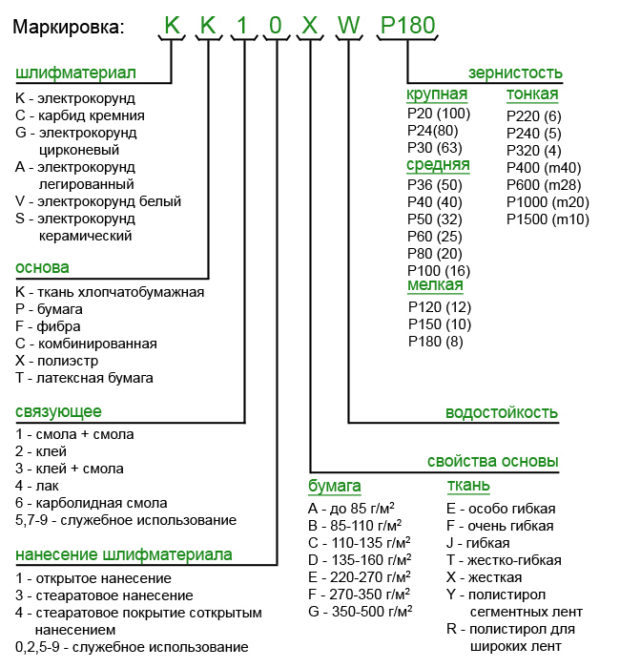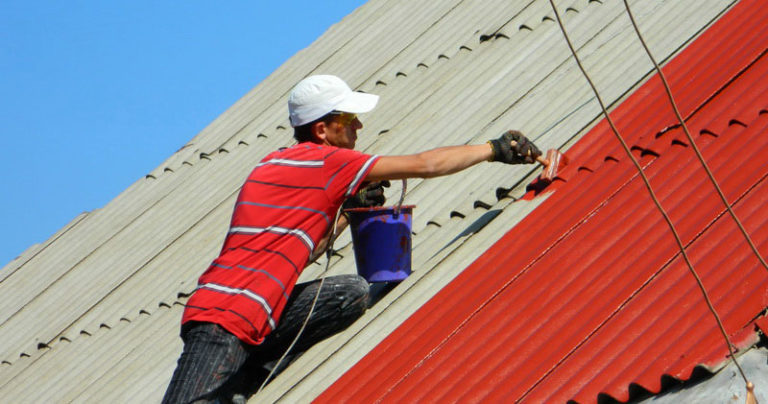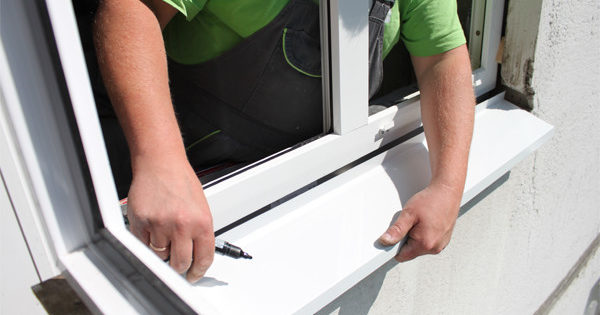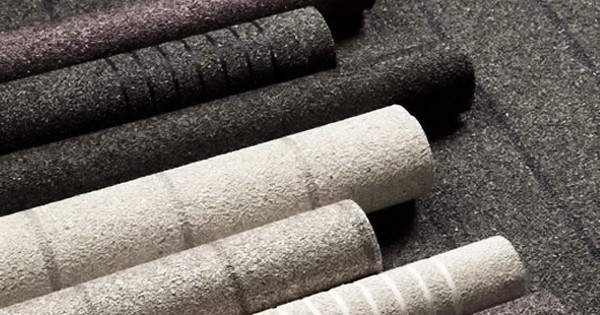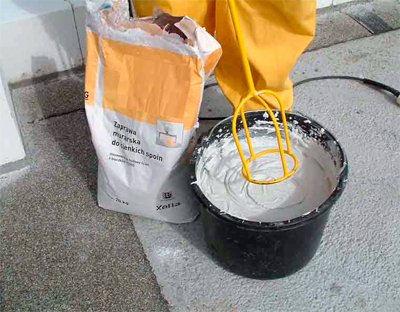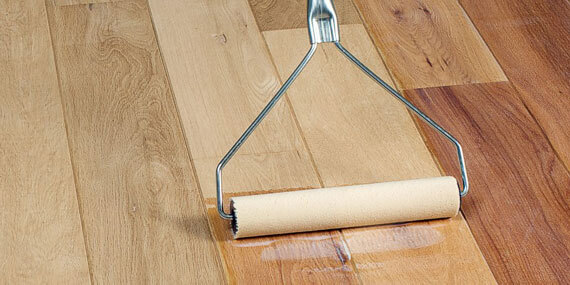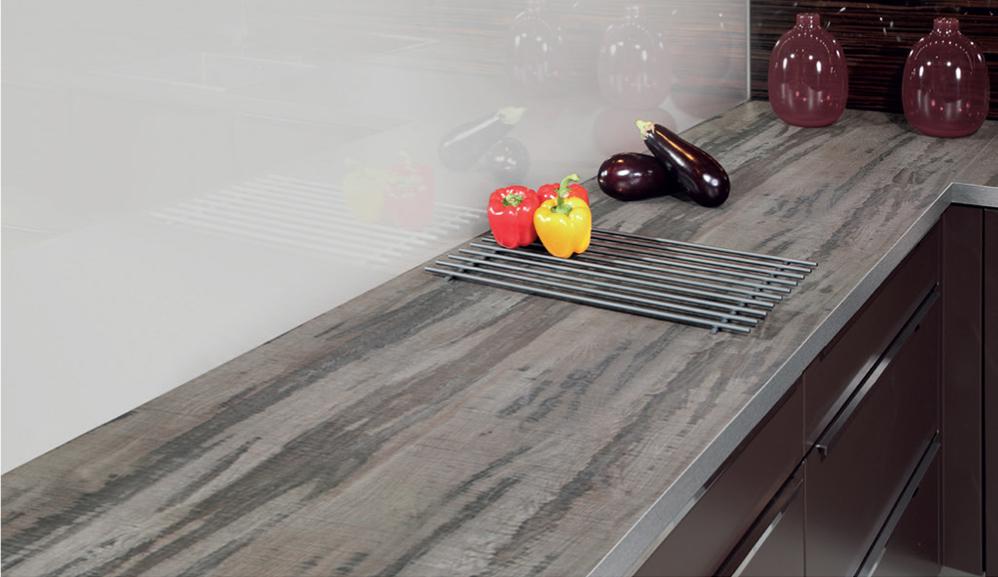5 tips on which sandpaper to choose: types, base, marking
To impart smoothness to surfaces, whether it is wood or metal, as well as to clean and, often, to give the necessary shape, sandpaper is often used. Processing with her participation can be done either manually or with the help of special tools or even whole machines, which already depends on the material to be processed and the level of complexity. At the same time, in order to achieve the desired result, it is important to understand which sandpaper to choose for certain jobs.
1. Types of sandpaper
The first, although in many situations, is not the most basic thing that distinguishes sandpaper from each other, is precisely the base on which the abrasive is applied. In the process of work, this, of course, can fade into the background, but in many respects the strength and wear resistance of sandpaper depend on it, which is also quite important. Nevertheless, you should not focus your attention on the presence of the word paper, since in addition to it, other materials are the basis for the skin. Below we will dwell on each of them in a little more detail, in order to understand their main advantages and disadvantages.
Paper base
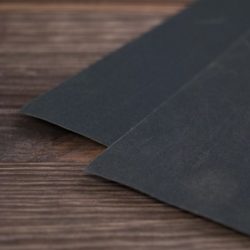 Of course, one of the most common and logical (in terms of name) grounds for applying an abrasive is precisely paper. It can be both ordinary and waterproof. This type of skin is different in that among others it is much more accessible, but it also has other advantages. For example, if you need a small piece of sandpaper to work, you can easily tear it off. At the same time, it does not stretch and allows you to easily process a relief surface. It is also attractive in that it makes it possible to apply the smallest abrasive powder. True, this type of skin is consumed faster than the rest, especially considering that in places where the paper is broken, the powder crumbles rather quickly. Well, the biggest drawback is the low strength of the paper base.
Of course, one of the most common and logical (in terms of name) grounds for applying an abrasive is precisely paper. It can be both ordinary and waterproof. This type of skin is different in that among others it is much more accessible, but it also has other advantages. For example, if you need a small piece of sandpaper to work, you can easily tear it off. At the same time, it does not stretch and allows you to easily process a relief surface. It is also attractive in that it makes it possible to apply the smallest abrasive powder. True, this type of skin is consumed faster than the rest, especially considering that in places where the paper is broken, the powder crumbles rather quickly. Well, the biggest drawback is the low strength of the paper base.
Fabric base
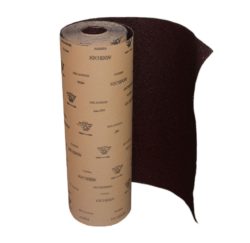 This material for the basis of skins takes the second place in popularity and distribution. Of course, in terms of durability, it is much more reliable and practical than paper, but because of this, its cost is much higher. This type of sandpaper is really characterized by high strength, mainly due to the fact that fabrics (whether polyester or cotton) are pre-impregnated with resin, which also gives resistance to moisture. Although there is a minus in this, as it becomes somewhat rougher, and the surface to be treated may not feel so good. And yet, such a skin can gather dust for years in pantry and not lose their abrasive properties. It also has very good elasticity, which is more disadvantageous for machine processing.
This material for the basis of skins takes the second place in popularity and distribution. Of course, in terms of durability, it is much more reliable and practical than paper, but because of this, its cost is much higher. This type of sandpaper is really characterized by high strength, mainly due to the fact that fabrics (whether polyester or cotton) are pre-impregnated with resin, which also gives resistance to moisture. Although there is a minus in this, as it becomes somewhat rougher, and the surface to be treated may not feel so good. And yet, such a skin can gather dust for years in pantry and not lose their abrasive properties. It also has very good elasticity, which is more disadvantageous for machine processing.
Combined base
It is logical that this type of sandpaper takes as a basis the combination of fabric and paper that are glued together. In fact, the skin on this basis is the most expensive and less common among home masters, since it is used more in professional and complex tasks. Of course, such a skin has all the advantages of the two previous species, almost neutralizing all of their shortcomings.
Fiber base
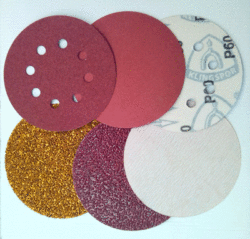 They are found on the expanses of the modern market of skins and on a fiber basis, although in the conditions of manual processing they hardly have high popularity. And the reason here is quite simple - they are designed for use with emery discs. But, among its advantages, the possibility of processing the hardest surfaces can be noted.
They are found on the expanses of the modern market of skins and on a fiber basis, although in the conditions of manual processing they hardly have high popularity. And the reason here is quite simple - they are designed for use with emery discs. But, among its advantages, the possibility of processing the hardest surfaces can be noted.
Soft base
The last type of sandpaper, which, in fact, often include the previous one. As the name implies, the basis of such a skin uses a soft base, which most often is foam rubber or polyurethane. With its help, the final stage of processing relief parts from wood or gypsum is performed, which is extremely practical, since you will need to feel every element of the processed surface.
2. Grain
This indicator in the choice of sandpaper is the most important, since overall performance depends on it. At different stages of cleaning, a skin with different grit indicators is used. Choosing the right one, especially if you know which sandpaper you need, will not be difficult, as these indicators are always indicated on the back of the sandpaper. Typically, the grain range is between 12 and 15,000 grit, although in some cases much more can be found. This number is nothing more than the number of wires per square inch of sieve through which the abrasive was sieved. In a simpler sense, it corresponds to the number of particles of the latter per the same square inch, only located on the basis of sandpaper.

So, those numbers that come after the letter P or words Grit on the reverse side of the skin, are indicators of its graininess. We figured it out. However, for those who are not completely aware of how this affects the cleaning process, it is worthwhile to talk about this in a little more detail. For example, if you need to clean a particular surface in order to level it, then for these matters any sandpaper with a grain size of up to 80 grit is suitable. It provides a fairly coarse sanding, and is mainly used on smooth surfaces. Further, to eliminate small scratches and grooves at the second stage of processing, it is recommended to use a softer skin, from 100 to 200 with a little grit. True, the upper indicator will depend on the material.
For finer processing, e.g. preparing wood for primer and subsequent staining, sandpaper is used even finer, over 280 grit. It will allow you to get rid of traces of dust, which in turn can qualitatively affect the surface after painting. The rest of the sandpaper, which is over 350 grit, is superthin and can be used for a variety of purposes where it is necessary to achieve an ideal surface. It no longer peels and polishes, it is already used for polishing.
One simple truth follows from this - the higher the grit size of sandpaper, the smoother the surface to be treated. However, there is also the flip side of the coin, since a finer skin grinds much faster, removing a much smaller layer when processing the material. And in the case of the latter, one should not forget about its hardness. In order for the processing process to proceed efficiently, you need to select sandpaper in accordance with these nuances.
3. Type of application of abrasive
When choosing a suitable sandpaper, this indicator should also be taken into account, as it can ultimately significantly affect the process. The thing is that the methods of applying abrasive powder to the base for the skin are slightly different, and this or that option may be different for different materials. By type of application, they are classified as follows:
- Open application (in marking - 1);
- Stearate application (marked 3);
- Closed application (marked 4).

Application may be by open bulk, covering about 60% of the base area, which is well suited for crumbling material, since such a skin is not so clogged. For metal, the most common option is sandpaper, where it is used closed filling methodcovering the entire cloth, which when working with a soft surface affects the fact that they quickly clog.
At mechanical way applying particles of abrasive simply fall under the action of gravity and lie on the base not so evenly, on different sides. Another application method is electrostatic, which allows you to create quite “sharp” skins. The fact is that under the influence exerted by electrostatics, the particles of the abrasive turn the tip in one direction.
4. Types of abrasive
The abrasive itself is also represented by a different amount of materials indicated in the marking of sandpaper, and among the most common are the following:
- Garnet - One of the most popular types of abrasive for processing hardwood like oak or beech. The main drawback of sandpaper with this abrasive is its quick wear.
- Silicon carbide - abrasive used mainly for paint removeras well as the processing of metal, plastic, ceramics, granite and other solid materials. Rather sharp, but at the same time quite affordable.
- Alumina - An interesting type of abrasive, characterized by "useful fragility." It has a decent service life, since when working with it, particles of abrasive break up from mechanical stress and friction, forming new sharp edges.
- Diamond - Perhaps the most expensive type of abrasive, which, as you know, is characterized by high strength and sharpness. Great for polishing carbide materials.
- Ceramic abrasive - Most often found in the form of sanding belts and is used exclusively in rough sandpaper, characterized by a very high hardness.
- Electrocorundum - The most widespread among abrasives. Much more durable than alumina, has a high cutting ability. It is mainly used for processing metal surfaces, but also hard wood.
- Quartz - not the most used abrasive, which, however, is not less practical. For the most part due to the fact that it is used when working with glass (in the same optics) and ceramics.
5. Marking
You can always find all of the above features in the marking of sandpaper, which will allow you to quickly and easily select the necessary option. Moreover, when it comes to all the features, this is what is implied, since there you can find the following characteristics of an abrasive blade:
- grain;
- web dimensions;
- base material;
- appointment;
- abrasive coating method;
- type of abrasive;
- fraction size;
- chemical composition of glue;
- wear resistance class.

All these characteristics are indicated in the marking, which is an alphanumeric code encrypting this information. There are a number of special notations used in the marking, however, they will be absolutely unnecessary for the simple user, since we have listed all the main aspects that deserve your attention when choosing sandpaper.

